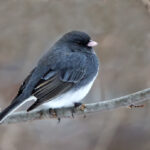For the first time, recipes invented on the Cape are collected in a book that brings together history and practical cooking advice. If you’ve never had a clam pie, now is your chance. These old recipes reveal a lot about the way local ancestors saw themselves and the land around them. In some cases, heated rivalries spill out between the lines of cooking instructions.
The book is still in the works; the Museum of Cape May County plans to publish it by the end of the year. Bobbi Hornbeck, an assistant professor of Archeology at Stockton and the head volunteer at the museum, spent many hours diving through the museum’s archives for old, sometimes tattered, recipes. Some were scribbled on the back of old receipts, others in messy journals. Others were solicited from locals, who submitted recipes that, in some cases, are being formally preserved for the first time.
Joann Hailey, from Villas, heard about the project from a Facebook call-to-action and knew her grandmother’s chili sauce had to make the cut. “Nana’s Chili Sauce” by Lida Church Willis, born in 1898, has been whipped up and enjoyed in Joann’s family since the early 1900s.
“It’s part of my family’s heritage. You think chili sauce is gonna be spicy, but it’s sweet. I’d see Nana out there grinding the tomatoes, she did it all herself,” Joann told Do the Shore.
“During the Depression, you had to make sure everybody survived. Nana made sure everybody ate,” she said.

Jamey Stofko, who lives in Barnegat, said that most of his family grew up in Cape May County. He remembers massive family gatherings in Seaville, nothing to do but play and talk. Twenty folks would pile into his grandparent’s home there. “My cousins, my family, absolutely everybody was there every single week,” he said.
“In those days, people didn’t really go anywhere. You lived in the community where you were born,” he said. Jamey can be forgiven for the sin of moving to Ocean County because of his contribution to the cookbook, the “Delaware Crybaby” cookie.
Will Valentino submitted a recipe on behalf of the historic Chalfonte Hotel in Cape May. Valentino was a “work weekender” there for a decade, which meant he exchanged his labor for food and a place to live. He was lucky enough to meet Helen Dickerson, Dot Burton, and Lucille Thompson, three famous “kitchen queens” whose fried chicken was unrivaled on the peninsula.
“Those ladies – the Chalfonte ladies – they became legends in their own time,” Will said. “People would wander back into the kitchen just to take photos with them.”

The cookbook, which is both history book and recipe collection, has contributions from other historic eateries: The Bellevue Tavern, Washington Inn, The Queen Victoria, Flander’s Hotel, and The Blue Pig.
Other recipes come from folks whose history is largely unknown. Still, juicy details can be gleaned from surviving documents. Judith Hughes wrote “directions for making cheese” in 1791. Where she lived and what she believed is a mystery, but read between the lines and it becomes clear that Judith hated the British. Judith was a proud American who held her nose at the idea of using British cheese, a common import. Her own dairy cows and from-scratch process was better than what the Brits could offer, thank you very much.
Back then, almost everything had to be made from scratch. Folks lived off the land and knew exactly what they were eating. There was no equivalent of the Hot Pocket or jiggling Trolli popsicle, whose ingredients are a mystery to most. A hundred years ago, people ate what was caught or grown locally.
Some recipes served specialized roles. “Joe Frogger’s” is a non-dairy molasses spice cookie that can stay fresh – but hard – for weeks. It was a common treat whalers took out to sea. Local bakers would imprint the sailor’s initials on the cookie so it was clear whose rations they were. There was no excuse for ‘accidentally’ stealing another man’s cookie.
But what about the clam pie recipe? Actually, the book has three. Lillian Moncrief has a recipe for her clam pie in the book, but elsewhere, Aaron Leaming Jr. makes it clear that his is better. Aaron, alongside Cold Spring local Jacob Spicer, wrote revisions to the New Jersey constitution that remain even today. With the publication of this new cookbook, the world will finally know that he also made a mean pickled herring and cucumber.
For more information about the cookbook, stay tuned to the The Museum of Cape May County’s Facebook page.
Contact the author, Collin Hall, at 609-886-8600 ext. 156, or by email at chall@cmcherald.com








